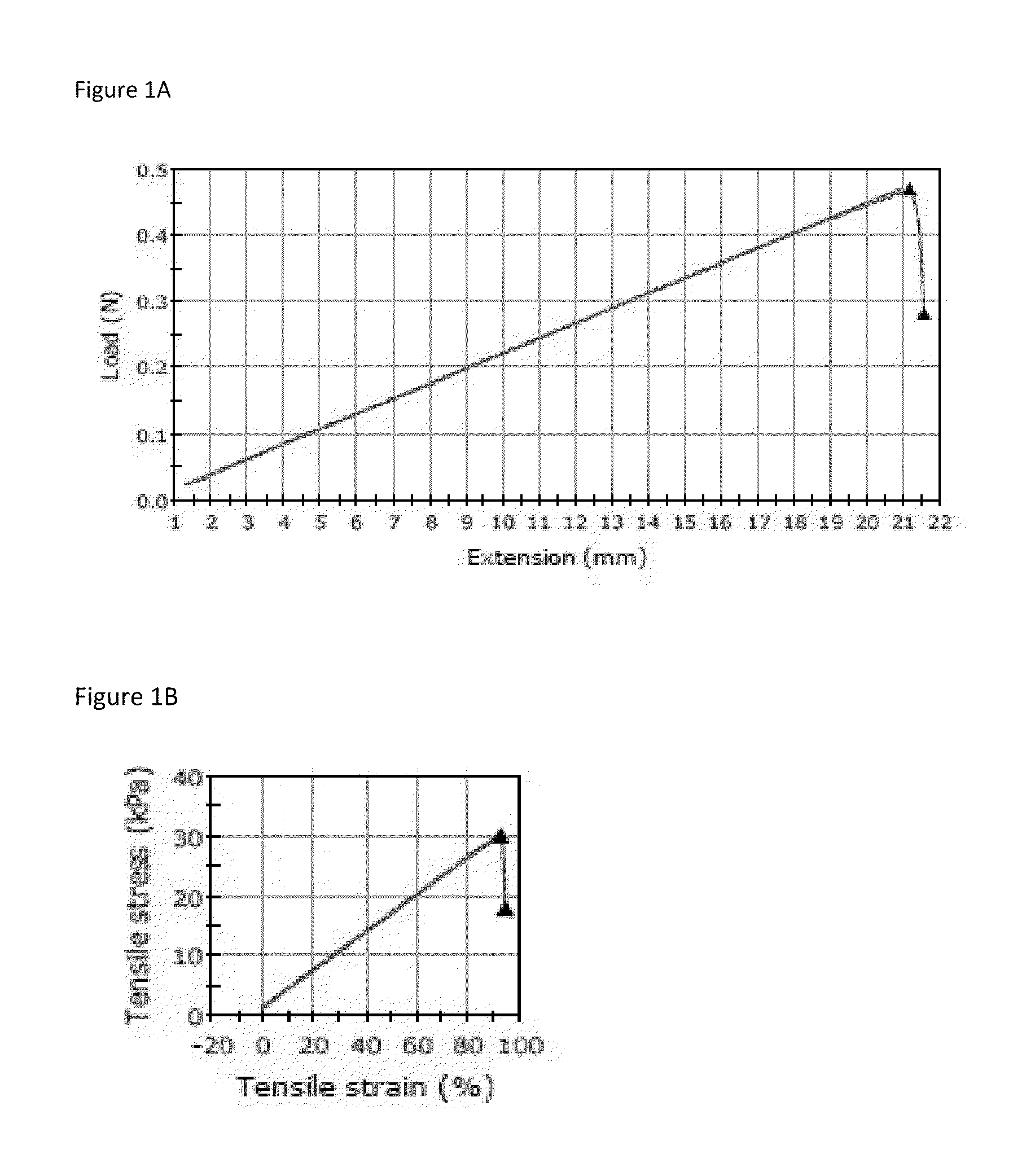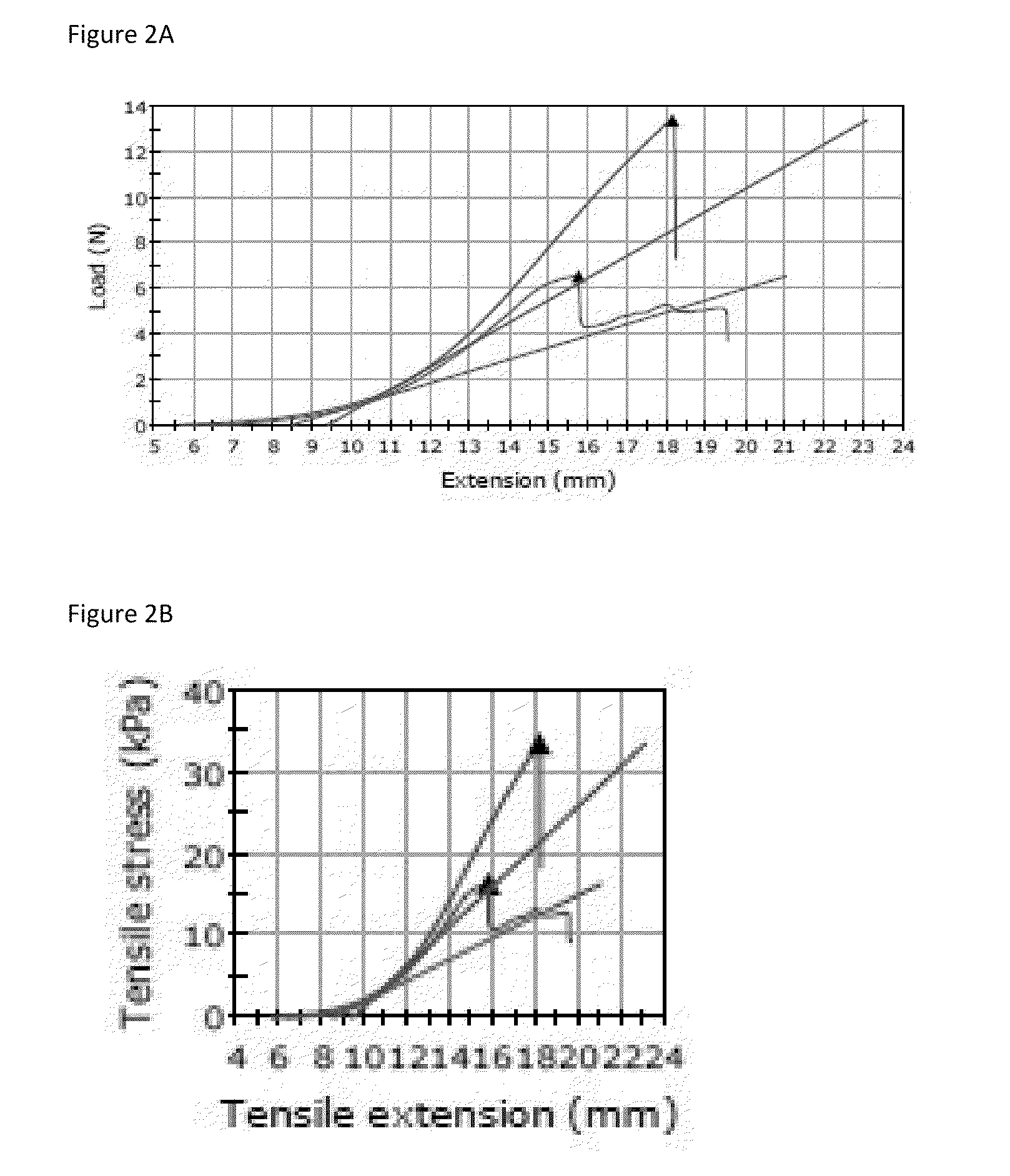Method for enzymatic cross-linking of a protein
a protein and enzymatic technology, applied in the field of protein cross-linking, can solve the problems of significant low efficacy, limited cross-linking reaction performance, and major flaws in existing products based on cross-linkable proteins
- Summary
- Abstract
- Description
- Claims
- Application Information
AI Technical Summary
Benefits of technology
Problems solved by technology
Method used
Image
Examples
example 1
Effect of TCEP on Heat and Urea Induced Gelation of BSA
[0137]Example 1 shows that the aggregation of albumin as a result of heat treatment and the presence of urea can be reversed by addition of a reducing agent such as TCEP. It also shows, without wishing to be limited by a single hypothesis, that urea has a major role in maintaining the resulting solution in a liquid state.
[0138]Furthermore, this Example describes removal of TCEP from the reaction mixture by dialysis. Removal of the disulfide reducing agent in other types of solutions is sometimes accompanied by air oxidation of the thiols back to the disulfides. Surprisingly, after the removal of TCEP by extensive dialysis the dialyzate remained in a liquid form.
[0139]2 gram BSA were mixed with 38 gram 5.6M urea to yield 5% w / w BSA solution (Solution A). The solution was heated at 70° C. After 15 minutes the solution started to get cloudy and contained white aggregates. After 25 minutes at 70° C. 2 ml of 1M TCEP were added to yie...
example 2
Effect of TCEP Concentration on Physical State of BSA
[0141]Example 2 shows that inclusion of TCEP at a concentration greater than at least 12 mM can prevent heat- and urea-induced aggregation or gelation of a 5% BSA solution, thereby demonstrating the overall efficacy of TCEP as a gelation controlling agent.
[0142]5% w / w BSA containing 5.6M urea was mixed with various concentrations of TCEP followed by heating at 70° C. for 10 minutes. The physical state of the BSA+urea+TCEP solution after the heating step is described in the table below.
TABLE 1TCEP effectTCEPconcentrationPhysical state of the BSA + urea + TCEP solution(mM)after heating at 70° C. for 10 minutes50Clear liquid25Clear liquid20Clear liquid1.5Clear liquid12.5Clear liquid10Viscous clear liquid7.5Very Viscous clear liquid - almost a gel5Transparent gel2.5Opaque gel0White solid
example 3
Effect of Heating and Various Combination of BSA, Urea and TCEP Concentration on the Physical State of BSA
[0143]Example 3 shows that the physical state of an albumin solution that has been heat treated for 10 minutes at 70° C. shows a direct concentration dependence on urea and TCEP (greater amounts of urea and TCEP result in a more liquid state) and on the concentration of albumin in an inverse correlation (more albumin results in aggregation / gelation). Without wishing to be limited by a single hypothesis, it may be the molar ratio of urea and TCEP to albumin that determines the physical, state.
[0144]BSA solutions containing urea were heated for 10 minutes at 70° C. in the presence of TCEP and the physical state of the solution was recorded.
TABLE 2TCEP / Urea vs Protein ConcentrationPhysical stateTCEPafter 10 min atBSA %Urea conc. (M)conc. (mM)70° C.164.550Clear gel164.510Clear gel164.52White solid162.2550Clear gel162.2510White solid162.252White solid161.12550Clear gel161.12510White ...
PUM
| Property | Measurement | Unit |
|---|---|---|
| molar ratio | aaaaa | aaaaa |
| molar ratio | aaaaa | aaaaa |
| temperature | aaaaa | aaaaa |
Abstract
Description
Claims
Application Information
 Login to View More
Login to View More - R&D
- Intellectual Property
- Life Sciences
- Materials
- Tech Scout
- Unparalleled Data Quality
- Higher Quality Content
- 60% Fewer Hallucinations
Browse by: Latest US Patents, China's latest patents, Technical Efficacy Thesaurus, Application Domain, Technology Topic, Popular Technical Reports.
© 2025 PatSnap. All rights reserved.Legal|Privacy policy|Modern Slavery Act Transparency Statement|Sitemap|About US| Contact US: help@patsnap.com


